Culture methods of mimosa what are the functions of mimosa
Mimosa leaves respond to heat and light, and mimosa closes when it is touched by an external force. Mimosa is a kind of plant that likes to be warm and humid, and it doesn't require much of the soil. The flowers and leaves of mimosa are of great ornamental value. Nowadays, many people like to raise potted plants at home, and mimosa is a good choice. Many people like mimosa, but many people can't grow it. So how much do you know about the culture method of mimosa? let's take a look at it with the editor.
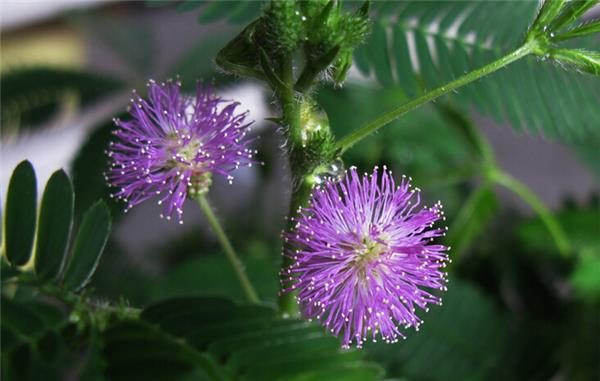
Culture methods of mimosa
◇-the sunshine of the culture method of mimosa-- ◇
Ensure plenty of sunshine, mimosa likes sunlight, it is best to put it on a sunny balcony or window, full exposure to sunlight is good for mimosa growth, if too little sunlight, it may hinder its growth.
◇-- watering of mimosa culture method-- ◇
Need regular watering, shy prairie is a tropical plant, like the humid environment, so always keep the basin soil moist, summer according to the basin soil situation watering, about once a day, do not let the soil dry, can often spray water to the plant, in winter to prevent freezing damage to reduce watering.
◇-- the soil of mimosa culture method-- ◇
Choose fertile and loose soil, mimosa does not have high requirements for soil, general garden soil can, but if you want mimosa to grow better, you can choose more loose and fertile soil, which can make the mixture of rotten leaf soil and sandy soil. Humus soil is also a good choice.
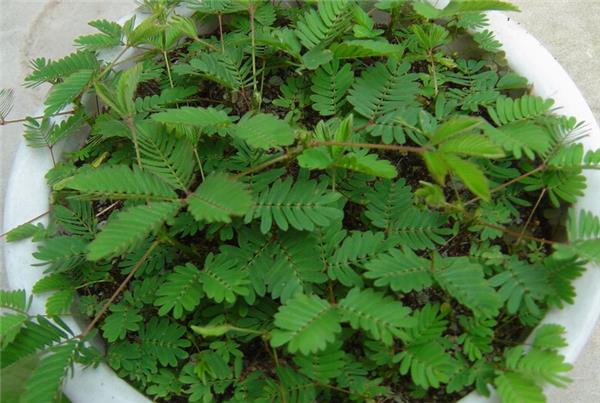
◇-- fertilization of mimosa culture method-- ◇
According to their own situation, mimosa can be fertilized once a month, but some people think that potted mimosa grows too big to look good, so people who think so should not apply fertilizer.
◇-- Disease and pest control of mimosa culture method-- ◇
To prevent diseases and insect pests, mimosa generally has few diseases and insect pests, and the most common pest is slug. If found, you can sprinkle some lime powder to control it. If the plant does not grow well, check to see if the light source is insufficient or the water is not enough.
The flowers, leaves and pods of mimosa have better ornamental effect, and are easy to survive, so they are suitable for balcony, indoor potted flowers, and can also be planted in the courtyard. Mimosa is different from other plants. When touched by the outside world, the petiole is drooping and the small leaves are closed. This action is understood as "shy", so it is called mimosa, mimosa, and ugly grass. So, do you know why mimosa is shy?
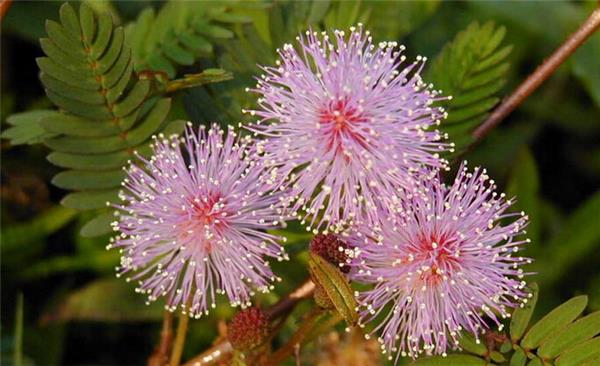
The reason why mimosa is shy
◇-- the reason why mimosa is shy
Plants are different from animals. Plants have no nervous system and no muscles can not sense external stimuli, but why mimosa is shy has something to do with the nervous system. Mimosa is supported by tiny reticular actin, which falls off when closed, resulting in closed movement. Thigh actin contains muscle fibers, which is very rare in plants.
◇-the second reason why mimosa is shy
If touched, the leaves of mimosa will close immediately, the bigger the touch, the faster they close, and finally the whole leaves droop as if they are powerless. Mimosa leaves and petioles have a special structure, and there is a leaf pillow in the middle, which is the most sensitive to stimuli. Once it touches the stimulus, it directly spreads to the leaf pillow at the base of the petiole, causing the leaves to close.
Mimosa leaves are feathery, the fruit layer is flat and round, the flowers are pink, and the shape of the ball is comparable to that of dandelions. Mimosa comes from tropical South America, likes to be warm and humid, and is not strict with the soil. In addition to its beautiful appearance, mimosa also has special functions that other plants do not have. What are these special functions?
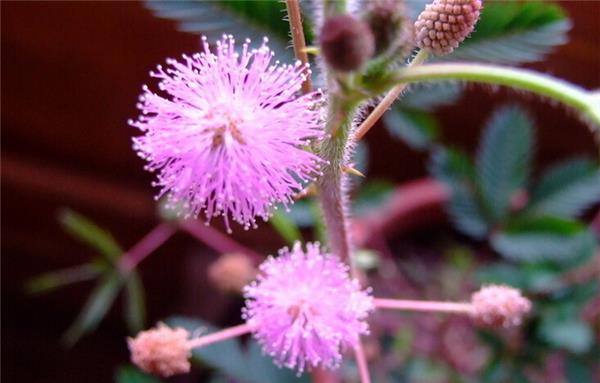
The special function of mimosa
◇-Weather Forecast-◇
Mimosa is a wonderful plant that can predict changes in the weather. If you touch it with your hand, its leaves close quickly and open slowly, indicating that the weather will clear up; if you touch mimosa, its leaves contract slowly, droop slowly, or even reopen a little bit, this means that the weather will change from sunny to overcast or it is going to rain.
The reason why the opening and closing speed of mimosa leaves can foretell the weather is mainly due to the fact that in the neck of mimosa leaves, there is a small drum-shaped parenchyma tissue-leaf mattress, which is filled with water. When you touch the mimosa leaf with your hand, as soon as the leaf vibrates, the water in the lower cells of the leaf mattress immediately flows upward to both sides, so that the lower part of the leaf mattress shrivels down, while the upper part bulges up, the petiole droops and the leaf closes. Therefore, the closure and opening of leaves are caused by the swelling and pressure of leaf mattresses. The expansion and pressure of the leaf mattress is closely related to the humidity in the air. When the air humidity is very small, the expansion and pressure effect of the leaf mattress is obvious, and the closing and opening speed of the leaf is fast; when the air humidity is very high, the opening and closing speed of the leaf is slow. Therefore, the speed of opening and closing of mimosa leaves indirectly reflects the humidity in the air and can be used as a reference for weather forecast.
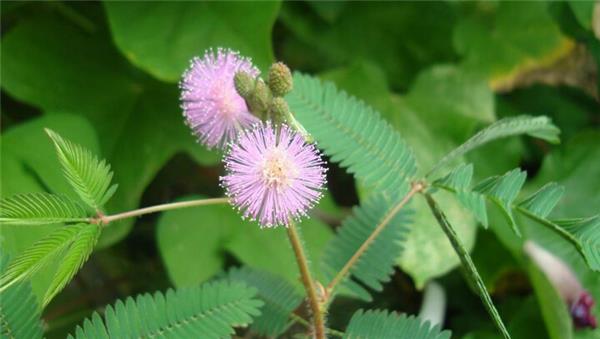
◇-earthquake prediction-◇
According to Turkish seismologist Erjiang, a few hours before a strong earthquake, the leaves of mimosa, which are sensitive to the outside world, suddenly shrink and then wither. In earthquake-prone Japan, scientists have found that under normal circumstances, mimosa leaves open during the day and close at night. If the leaves of mimosa close during the day and open at night, it is a sign of an earthquake. For example, at 7: 00 a.m. on January 11, 1938, the mimosa began to open, but at 10:00, all the leaves suddenly closed, and sure enough, a strong earthquake occurred on the 13th. Members of the earthquake Club of Japan in 1976 observed the abnormal closure of mimosa leaves many times, resulting in an earthquake. This real event.
In addition, mimosa can also predict disastrous weather changes, which will produce unconventional growth activities to sudden anti-seasonal temperature difference, geomagnetism, geoelectricity and other changes. We can put some potted mimosa plants in the room to observe the prediction and prevention of natural disasters.

The above is to introduce the knowledge of mimosa to you today. Mimosa is more lovely and suitable for decorating small and fresh homes. Many people may know why mimosa is shy and lose its previous enthusiasm, but if you want to raise mimosa at home, take a closer look at the above mimosa farming methods.
This means that the weather will change from sunny to cloudy or it is going to rain.
The reason why the opening and closing speed of mimosa leaves can foretell the weather is mainly due to the fact that in the neck of mimosa leaves, there is a small drum-shaped parenchyma tissue-leaf mattress, which is filled with water. When you touch the mimosa leaf with your hand, as soon as the leaf vibrates, the water in the lower cells of the leaf mattress immediately flows upward to both sides, so that the lower part of the leaf mattress shrivels down, while the upper part bulges up, the petiole droops and the leaf closes. Therefore, the closure and opening of leaves are caused by the swelling and pressure of leaf mattresses. The expansion and pressure of the leaf mattress is closely related to the humidity in the air. When the air humidity is very small, the expansion and pressure effect of the leaf mattress is obvious, and the closing and opening speed of the leaf is fast; when the air humidity is very high, the opening and closing speed of the leaf is slow. Therefore, the speed of opening and closing of mimosa leaves indirectly reflects the humidity in the air and can be used as a reference for weather forecast.

◇-earthquake prediction-◇
According to Turkish seismologist Erjiang, a few hours before a strong earthquake, the leaves of mimosa, which are sensitive to the outside world, suddenly shrink and then wither. In earthquake-prone Japan, scientists have found that under normal circumstances, mimosa leaves open during the day and close at night. If the leaves of mimosa close during the day and open at night, it is a sign of an earthquake. For example, at 7: 00 a.m. on January 11, 1938, the mimosa began to open, but at 10:00, all the leaves suddenly closed, and sure enough, a strong earthquake occurred on the 13th. Members of the earthquake Club of Japan in 1976 observed the abnormal closure of mimosa leaves many times, resulting in an earthquake. This real event.
In addition, mimosa can also predict disastrous weather changes, which will produce unconventional growth activities to sudden anti-seasonal temperature difference, geomagnetism, geoelectricity and other changes. We can put some potted mimosa plants in the room to observe the prediction and prevention of natural disasters.

The above is to introduce the knowledge of mimosa to you today. Mimosa is more lovely and suitable for decorating small and fresh homes. Many people may know why mimosa is shy and lose its previous enthusiasm, but if you want to raise mimosa at home, take a closer look at the above mimosa farming methods.
Related
- Wuhan Hospital Iron Tree Blooming Result Was Instantly Frightened by the Gardener Master
- Which variety of camellia is the most fragrant and best? Which one do you like best?
- What is the small blue coat, the breeding methods and matters needing attention of the succulent plant
- Dormancy time and maintenance management of succulent plants during dormancy
- Minas succulent how to raise, Minas succulent plant pictures
- What are the varieties of winter succulent plants
- How to raise succulent plants in twelve rolls? let's take a look at some experience of breeding twelve rolls.
- Attention should be paid to water control for succulent plants during dormant period (winter and summer)
- Watering experience of twelve rolls of succulent plants
- Techniques for fertilizing succulent plants. An article will let you know how to fertilize succulent plants.



